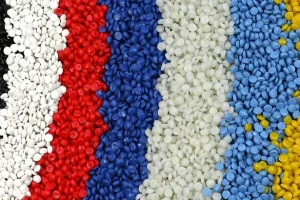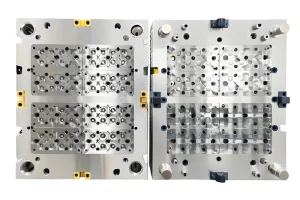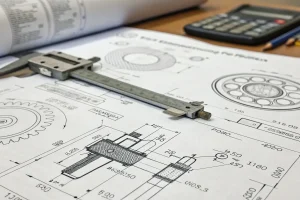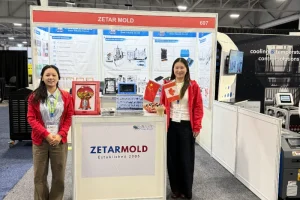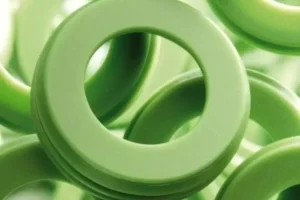Foam injection molding is one of the indispensable advanced technologies in modern manufacturing. As modern society continues to move towards industrialization, foam injection molding technology has received more and more attention and favor due to its characteristics and applications. This article will strive to explain the concept of foam injection molding, the process flow, the materials used, its advantages and disadvantages, and its application in different fields.

Basic Principles of Foam Injection Molding
Foam injection molding is an injection molding process that injects gas or chemical foaming agents into the plastic melt during the molding process to form a foam structure. Its basic principle is to use physical or chemical methods to evaporate or decompose the plastic material under heating and high pressure to form evenly distributed bubbles in the plastic melt. After cooling, the melt hardens to form a plastic product with a foam structure.

Process Flow of Foam Injection Molding
Foam injection molding is an efficient and precise plastic processing method, which is widely used to manufacture lightweight, moderately strong injection molded parts and product structures, such as packaging materials, automotive interior parts, electronic product housings, etc. The following are the detailed steps of the process:
1. Raw Material Preparation: Select appropriate types of plastic materials of foam injection molding, such as polystyrene, polypropylene, polyethylene and etc.
2. Adding Foaming Agent: Add physical foaming agents (such as nitrogen, carbon dioxide) or chemical foaming agents (such as azo compounds, sodium bicarbonate) to the plastic raw materials.
3. Heating and Plasticizing: Heat the mixture to state in which the foaming agent decomposes or vaporizes, in the barrel of the injection molding machine.
4. Injection Molding: Pour the molten mixture into the mold cavity and a specific pressure should be applied in order to forming.
5. Foaming and Cooling: Cooling in the injection mold cavity, during the cooling process, the bubbles in the melt expand and form a foam structure.
6. Demolding and Removal: Following molding the foam plastic is cooled and solidified and the molded foam plastic product can then be taken out of the mold.

Material Selection for Foam Injection Molding
The materials commonly used for foam injection molding include:
1. Polystyrene (PS): It has good heat resistance and foaming characteristics, and is used for produing all kinds of foam plastics for packaging and heat insulating articles.
2. Polypropylene (PP): It is rather good for its mechanical properties and chemical stability, that is why automobile components, home appliance shrouds, etc are created from it.
3. Polyethylene (PE): Being feature of good impact resistance and wear resistance it is often used to produce pipes, sheets etc.
4. Polyurethane (PU): As for its characteristics, it possesses excellent elasticity as well as wear and tear resistance and that is why it is applied in the production of foam cushions, gaskets, etc.
5. Polyamide (PA): Due to its high wear ability and mechanical strength it can be used in the manufacturing of engineering plastic products.

Advantages and Disadvantages of Foam Injection Molding
Advantages
1. Material Savings: Due to the presence of the foam structure, the density of foam injection molded products is lower, saving a significant amount of plastic material.
2. Weight Reduction: The Key characteristic of foam injection molded products is that they are lighter, during transportation and usage, it becomes less of a burden much more appropriate for automotive and aerospace industries.
3. Improved Insulation Performance: It is good for heat and sound insulation applicaons and can be used to produce differen types of insulation products.
4. Excellent Energy Absorption: Foam plastic products also enjoy high energy absorption characteristics, they can successfully absorb energy and prevent packaged products or protect things from collision.
5. Reduced Internal Stress: The use of foaming agents in foam injection molding diminishes the residual stress inside the products and therefore contributes for the improvement of the dimensional stability and of the service life.

Disadvantages
1. Complex Process: The foam injection molding is a complex process compared with the standard injection molding, the equipment specifications and operators’ skills.
2. Higher Costs: On the account of the use of specialized foaming agents and machinery, the cost of structural foam process is a little on the higher side.
3. Difficult Quality Control: Injection molded foam products are characterized by the temperature, cavity pressure, and concentration of the foaming agent; thus, quality control is not easy.
4. Environmental Impact: Certain chemical blowing agent give out toxic gases when they decompose, and therefore have such effects on the environment.

Applications of Foam Injection Molding
Foam injection molding technology is widely used in various industries, mainly including the following fields:
1. Automobile Manufacturing: Foam injection molding technology is widely applied in cars’ interior and exterior trims, seats, bumpers, etc. , which is applicable to weight-reducing of cars, improving car’s fuel, and enhancing safety performance.

2. Packaging Materials: Foam injection molded products possess good buffering performances, they are extensively applied for producing various kinds of packages like electric apparatus packaging and food packaging.

3. Building Materials: New, modern foam injection molding technologies make it possible to obtain building insulating materials, sound proof materials, etc. , thus increasing thermal/electrical invariable and comfort of buildings.

4. Home Appliances: Foam injection molding technology is used in application of home appliance housing, internal structural parts and so on; it has the advantages of weight reduction and increase the heat insulation performance.

5. Aerospace: Foam injection molding technology enhances the development of airplane seats and interior decoration parts in the aerospace field, advantages include but not limited to decreasing the weight and enhancing safety performance.

Case Studies of Foam Injection Molding
Automotive Seat Foam Molding
Automotive seats are one of the important application fields of foam injection molding technology. Generally, conventional car seats mostly incorporate foamed polyurethane materials. Foam injection molding technology can provide the user with comfortable and solid seats. This process also improves the structural characteristics of the seats specifically their ability to absorb shock and their resistance to wear and tear as well as make lighter vehicles resulting to better fuel economy.

Electronic Product Packaging
Electronic product packaging requires excellent cushioning and protective properties. Foam injection molding technology can make lightweight, high strength foam packaging materials, which can provide external shock-absorbing effect to protect the electronic products in transit. Also, foam packaging materials are useful for it can packaged according to the shapes of the products thus enhances the packaging.

Building Insulation Boards
Energy conservation in buildings is one of the significant questions of contemporary architecture. Through foam injection molding technology, foam insulation boards can be manufactured that have good thermal insulating properties for building walls, roofs, etc. and can minimize heat exchange and improve the building’s sound and thermal insulation and energy saving effect.

Development Trends of Foam Injection Molding Technology
With continuous technological advancements, structural foam molding process is also evolving, mainly showing the following trends:
1. Green and Environmental Protection: With increasing environmental awareness, the development of foam injection molding technology focuses more on using environmentally friendly foaming agents and recyclable materials to reduce environmental impact.
2. High-Performance Materials: In future foam injection molding technology will upgrade high performance material like nanocomposite and polymer alloys to improve product performance and use domain.
3. Intelligent Production: With the development of Industry 4. 0, foam injection molding technology will gradually upgrading to intelligent and automation production, this will enhance the production efficiency and product quality.
4. Multi-functionality: In the future, the technology adopted in foam injection molding will more and more reach the multi-functional demand of the product like conductivity, antibacterial, flame retardant, etc.

Prospects of Foam Injection Molding in Different Fields
Foam injection molding technology has broad application prospects in various fields, specifically reflected in the following aspects:
Automotive Industry
As the requirement for automobile lightweighting and energy-saving continues to grow in the future, foam injection molding technology will be applied to automotive interior and exterior accessories, structural parts etc. Meanwhile, with the development of high-performance materials and intelligent production technologies, foam injection molding technology will improve both the performance and production rate of automotive parts even more.

Construction Industry
Leveraging the growth in green buildings and energy-saving buildings, foam injection molding technology will be quite useful in production of building insulation and soundproofing materials. Instead, in future work, more efficient and green foaming agents and optimized parameters can be introduced in the production of building materials to enhance the performance and measure the green index of building material highly.

Electronics and Appliances
Foam injection molding technology has great application prospects in the market of electronics and appliances, for example, in the packaging of electronic products and the external shells of home appliances. In the future more lighter, stronger and more friendly on the environment foam plastic products can be developed with continued material and process improvements catering for electronics and appliance industry.

Aerospace
Foam injection molding is widely useful in automobile areas and especially in aerospace field for parts of airplane seats and interior decoration. As for the mentioned aerospace industry, with the improvements on aerospace technology, the requirements of light weight, high strength and safety of the material have been increasing. Doing so, foam injection moulding technology will be of even more significance.

Consumer Goods
Foam injection molding technology is also extensively used in consumer goods field like sports equipment, furniture and children’s toys. In the future, of course, as the possibilities of the process technology continue to improve, foam plastic products that can be seen as more ergonomic, environmentally friendly, and which have a more appealing look to the consumers can be made.

Conclusion
Foam injection molding manufacturing process being a kind of sophisticated manufacturing technology has received a growing concern because of its prominent characteristic and extensive applicability. Combined with suitable material selection, process design and control, new high performance materials and intelligent control, foam injection molded products performance and production efficiency can be further enhanced, to meet the desire of various industries to obtain higher quality and performance of the product.

Foam injection molding technology will turn towards the direction of green, high performance, and intelligence in the future as technology advances and people pay more attention to the environment, and thus it will have a wider development space. Therefore, foam injection molding technology regardless of the automotive industry or construction industry, electronics, aerospace or other industries, and molding technology will be more and more important, for the development of various industries to play a strong support.


